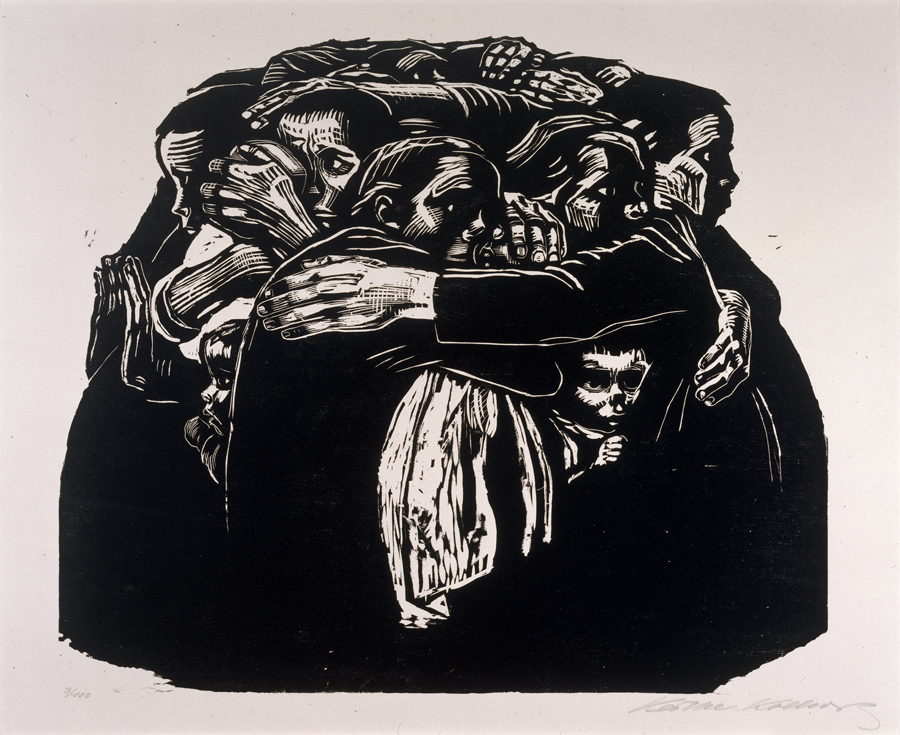Review: Mothers’ Arms: Käthe Kollwitz’s Women and War
by Ivy Vance

The current exhibition at Smith College Museum of Art is a thoughtful examination of the work of the German artist, Käthe Kollwitz. Specifically, it focuses on Kollwitz’s depiction of women and war, as mothers, mourners, and witnesses. Kollwitz, who lived through World War I and died shortly before the end of World War II, skillfully uses printmaking to illustrate her bleak outlook on the wars that ravaged Europe in the first half of the 20th century. The use of lithography and woodcuts in portraying these maternal, but melancholy scenes produce haunting, mostly monochromatic prints that depict the plights of women in wartime Germany.
The exhibition is presented as a timeline of Kollwitz’s journey not only as an artist, but as a mother. It shows prints that were inspired by the Weavers’ Uprising, the Peasant Wars, and the First and Second World Wars. The gallery follows this timeline, which is established by Kollwitz’s series of prints that reflect these events. Almost every piece that is displayed is accompanied by an excerpt taken from Kollwitz’s personal journal or correspondence, many of which directly refer to the coinciding print. This adds a layer to the work that invites the viewer into what the artist was feeling at the time of its creation. This is especially potent in the prints that depict motherhood and grief, which reflect Kollwitz’s own struggle with the loss of her son Peter in World War I. The softness produced by the lithographs and the stark contrasts produced by the woodcuts create opposing, but congruent imagery that represent remembrance and resilience.
Kollwitz’s work is unique from other depictions of war. Her deliberate turn inward to the maternal and the domestic created images that represent the deep suffering that war produces. These aspects of war are often forgotten, but Kollwitz’s work brings them to the forefront. The rest of the gallery displays artifacts from the era: propaganda posters featuring women, Nazi paraphernalia, as well as newspapers that Kollwitz’s prints were featured in to provoke social change. This, along with Kollwitz’s prints, creates a robust timeline that transports the viewer into the mindset of the artist.
Mothers’ Arms: Käthe Kollwitz’s Women and War is on view at the Smith College Museum of Art from January 29—May 29, 2016.
Ivy Vance 13F is a Research Assistant at the Institute for Curatorial Practice.
This post is part of a series of essays, opinions, and reviews written by students, faculty, and staff of the Institute for Curatorial Practice.
